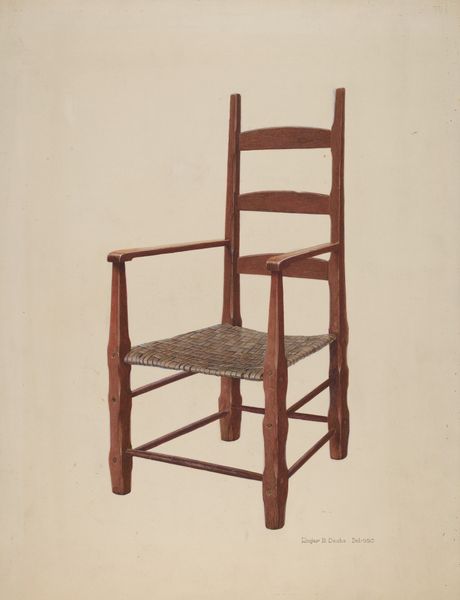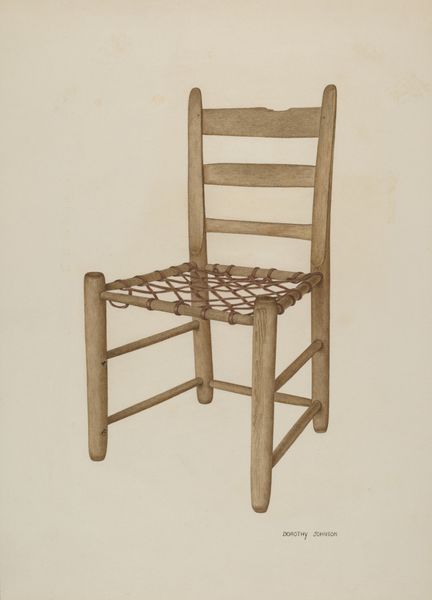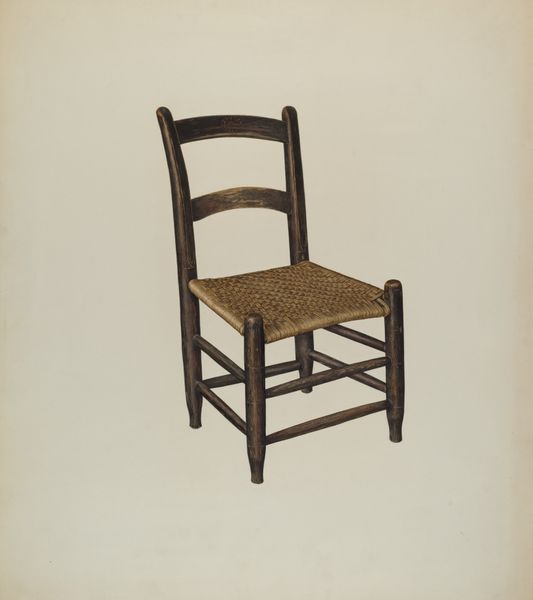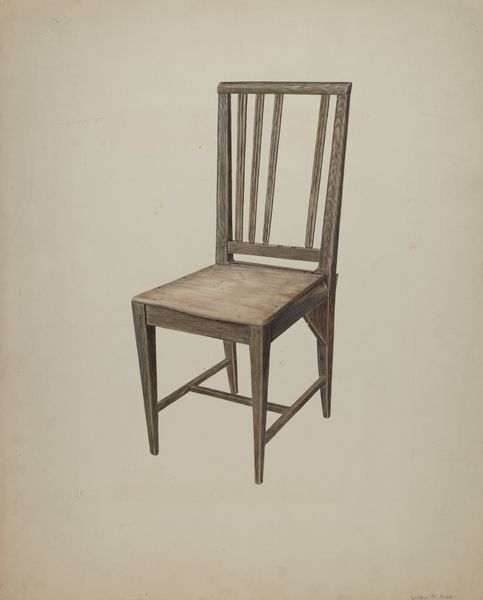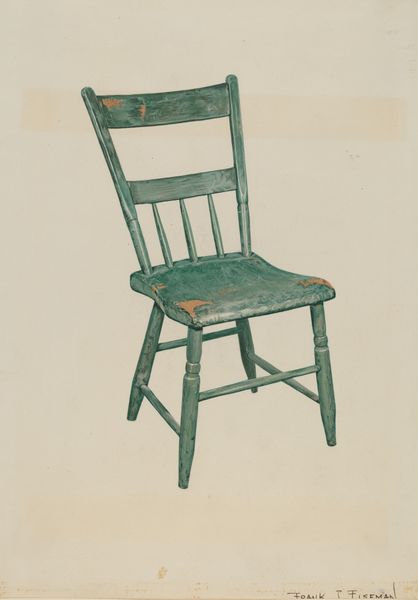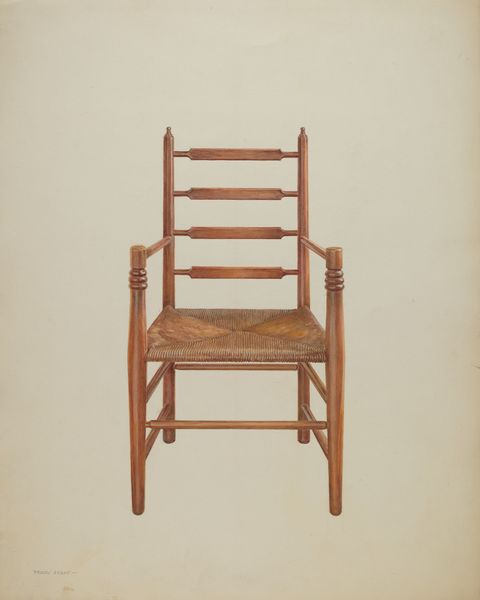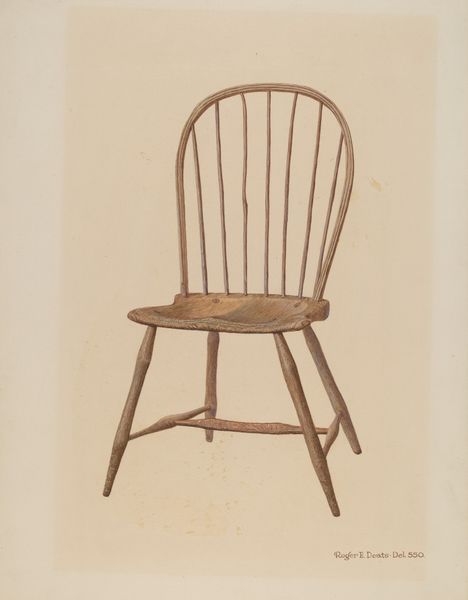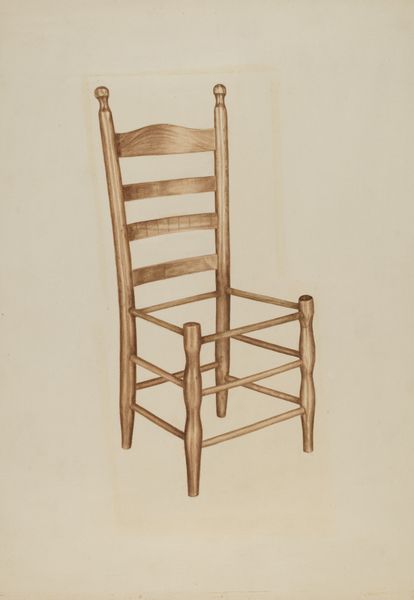
drawing, watercolor
#
drawing
#
charcoal drawing
#
watercolor
#
charcoal
#
watercolor
#
realism
Dimensions: overall: 35.4 x 27.6 cm (13 15/16 x 10 7/8 in.) Original IAD Object: 36"high; 17"wide; 15"deep
Copyright: National Gallery of Art: CC0 1.0
Editor: Here we have Virgil Liberto’s "Rawhide Bottom Chair" from 1939, a drawing composed of watercolor and charcoal. It feels very still and formal, even a bit austere. What stands out to you in this work? Curator: Immediately, I am drawn to the interplay of lines and geometric forms. Note the strict verticality of the chair legs juxtaposed with the horizontal rungs and back supports. It establishes a grid-like structure, doesn't it? And yet, this is softened by the slight irregularities in the rendering, visible through subtle shading. How does this combination of rigidity and organic softness strike you? Editor: I see what you mean. It's almost like a blueprint, but softened, as if seen through a filter of memory. Does the subject matter itself—a common chair—add anything to this formal reading? Curator: Indeed. By focusing on such a utilitarian object, Liberto directs our attention towards form and execution rather than narrative. The delicate use of watercolor lends a particular tonality to the wooden structure and the woven seat. Note, too, the meticulous rendering of light and shadow that defines the object. It's not merely a chair, but a study in texture, line, and tone. Editor: So, the formal elements elevate this humble chair. I suppose I came in looking for narrative and completely missed that the lines themselves were the point. Curator: Precisely! By deconstructing our conventional expectations, the artist asks us to appreciate the inherent aesthetic qualities of everyday objects. The artwork prompts an important discourse in arts. Editor: Well, I have gained a completely different insight to think about while looking at art going forward! Thanks!
Comments
No comments
Be the first to comment and join the conversation on the ultimate creative platform.

